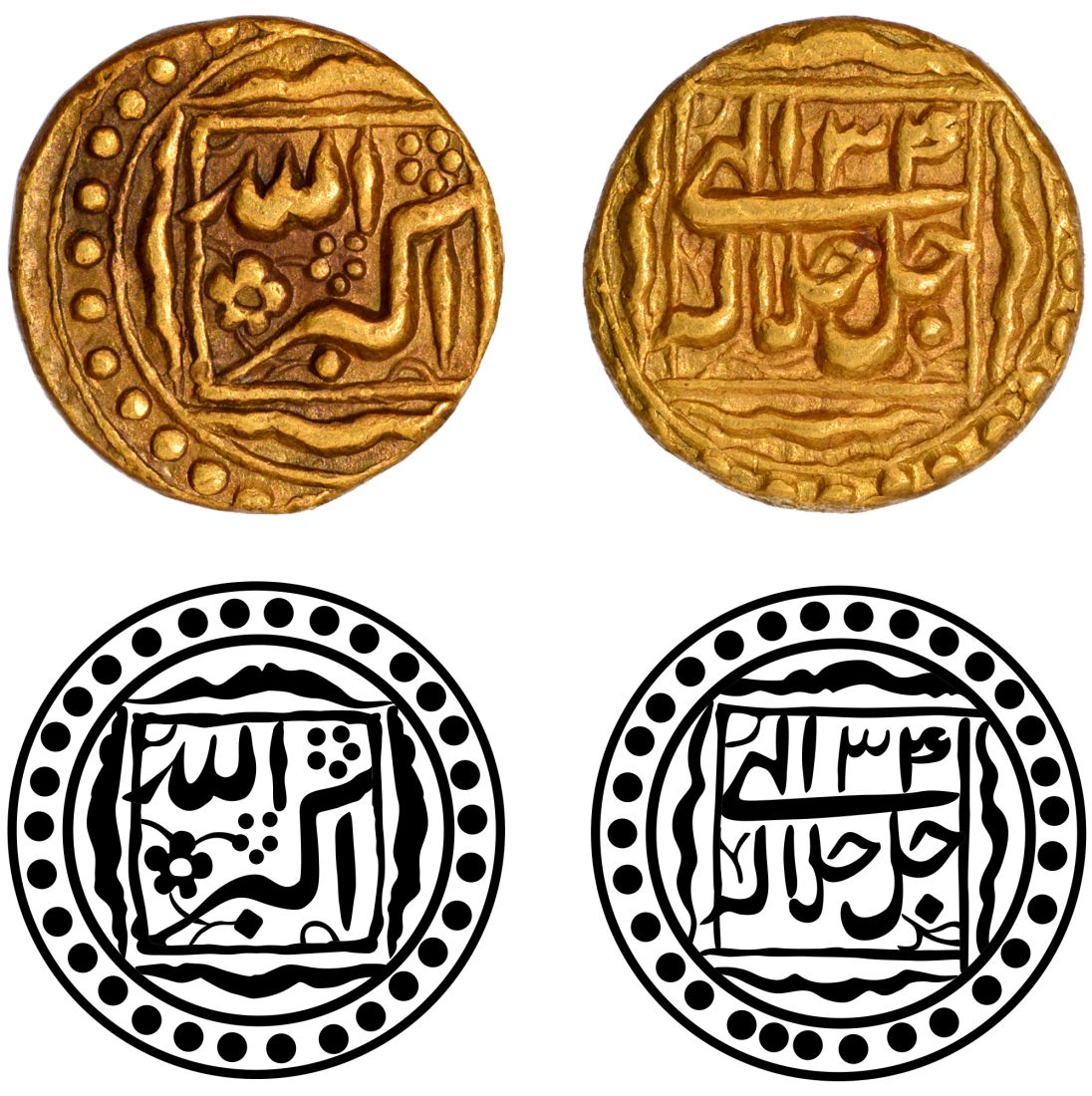This Lot is closed.
- P-Auction # 38
- Views:423
| Start Price 3000000 | Estimated Price 3000000-3500000 |
| login, to view Hammer value | |
| Quick Description | ||||
|---|---|---|---|---|
| Denomination | Gold 1/2 Mohur | Mint | Mint Less | |
| Metal | Gold | Month (Akbar & Jahangir Coins) | Elahi 42 or 44 | |
| Full Description: Jalal ud-din Muhammad Akbar (AH 963-1014 /1556-1605 AD), Gold ½ Mohur, named as Dhan (Wealth), Elahi 34 (re-engraved over 33), Mintless & Month less Type, Obv: Ilahi creed in Arabic legend “Allahu Akbar" (Allah is great) legend within an ornamental rectangle and beaded border, Rev: Ilahi year followed by the other part of the Ilahi creed in Arabic legend “JallaJalalahu” (His glory shines forth) within an ornamental design similar to obverse floating in the field, 6.01g, 14.27mm (Unlisted in Major Catalogues), no test mark, very attractive, high relief, sharply struck, superb quality, XF-AU, so far Presumably Unique. Note: A detailed account of Akbar’s coins and their denominations is found in the 10th section of the ‘Ain-i Akbari, a descriptive account of Akbar’s governance by Abu’l Fazl Allami. According to this description, Akbar gave interesting names drawn from various inspirations to his coins. Some names reflected coin designs while others drew from Hindu and Islamic concepts of universal understanding. A gold mohur weighing 1 tola, 2 mashas and 4 ¾ surkhs and valued at 12 rupees is listed here as the ‘Aftabi’ mohur. The coin offered here is exactly half this weight. No half fraction of the ‘Aftabi’ mohur is mentioned in the ‘Ain but a half mohur named ‘Dhan’ is mentioned as a fraction of the ‘La’lJalali’ or ‘Ilahi’ variety, which was of normal weight and worth 10 rupees. Following the Islamic Millennium of AH 990, Akbar issued a series of mintless and dateless coins. However, the Ilahi Era dates were quickly added to the design – for gold, the earliest year known is 30, which is found counter-stamped on some dateless mohurs. The design of this ½ mohur is very similar to these counter-stamped issues and it must have been struck in the same mint in close succession, as evident from the year 33 on the reverse. The fact that it was re-engraved to 34 suggests the dies were re-used to save manufacturing costs. Abu’lFazl mentions that all coins except the La’l Jalali, Dhan, and Man (i.e. full, half, and quarter mohurs of normal weight) were struck only on special orders. It is therefore likely that this ½ Aftabi mohur was struck for a special occasion. All these aspects add to the significance and uniqueness of the coin. An Extraordinary Specimen of great rarity and historical importance! | ||||



